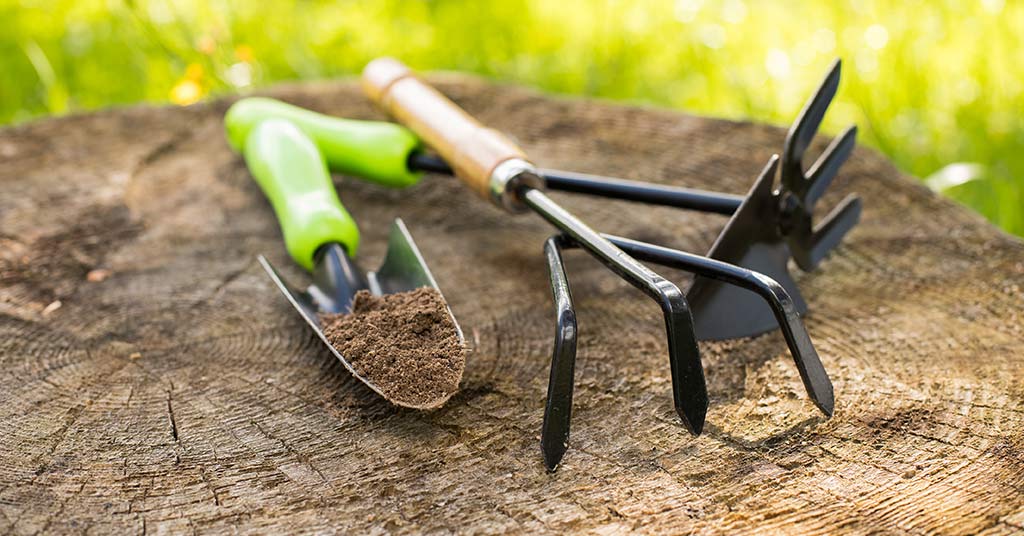A flourishing garden can be a sight, but have you ever considered the potential dangers lurking within your tool shed? Is Gardening Tools Dangerous? may seem like an odd question at first glance, but as we delve deeper into this discussion, you might reevaluate your safety measures.
Is Gardening Tools Dangerous?
Gardening tools can be handy and potentially dangerous, depending on their use and the precautions taken. While they are designed to make gardening tasks more accessible and efficient, the sharp blades, heavy construction, and power sources associated with many gardening tools can pose risks to the user. Standard gardening tools like pruners, shears, and shovels can cause cuts, blisters, or strains if mishandled.
Power tools, such as chainsaws and hedge trimmers, carry a greater risk of injury if not operated carefully. Gardeners must be aware of safety guidelines, wear appropriate protective gear, and carefully handle tools to minimize the dangers associated with gardening equipment.
Potential Dangers Associated with Gardening Tools
Although incredibly useful, gardening tools can pose several potential dangers if not handled with care and attention. Here are some of the potential dangers associated with gardening tools:
Cuts and Lacerations:
Many gardening tools have sharp blades, such as pruners, shears, and knives. These tools are designed to cut through plant material but can also easily cut human skin. Accidental contact with the sharp edges, improper handling, or slipping while using these tools can result in cuts and lacerations, which can be painful and require medical attention.
Blistering and Abrasions:
Prolonged use of specific gardening tools, like shovels, rakes, and hoes, can lead to hand blisters and abrasions. This is often due to friction and pressure exerted on the hands, especially if the tool handles are not ergonomically designed or if gardeners fail to wear appropriate gloves.
Strains and Sprains:
Gardening often involves activities that require repetitive motions, lifting, and bending. Improper lifting techniques or overexertion can lead to muscle strains and sprains, particularly in the back, shoulders, and knees. It's essential to use proper body mechanics and take breaks to prevent these injuries.
Impact Injuries:
Tools like hammers and mallets are used for various gardening tasks, and if not used carefully, they can result in accidental impact injuries. When a misplaced strike occurs, these injuries may affect the fingers or hands, leading to bruising or more severe damage.
Electrocution:
Electric or battery-powered gardening tools like hedge trimmers and chainsaws risk electrocution if not used safely. Electrical cords and outlets should be inspected for damage, and users should follow safety guidelines, such as keeping cables away from water sources and ensuring tools are properly grounded to prevent electrical hazards.
Tool Malfunctions:
As time goes by, the condition of gardening tools can degrade, resulting in loose components or faulty safety mechanisms. Accidents are more likely to occur when these tools are not maintained properly. Regular upkeep tasks like tightening bolts and sharpening cutting edges help ensure these instruments operate safely.
Case Studies of Gardening Tool Accidents
Among the serene blossoms and verdant greens often lies an untold narrative of the unexpected - gardening tool accidents. Here are a few case studies of real-world gardening tool accidents to emphasize the importance of safety:
CASE STUDY: Jessica's Misstep
Jessica has always loved nature. Her lush backyard garden was her pride, but things went awry in an attempt to prune her roses one sunny afternoon. The pinnacle of the disaster was when she inadvertently stepped on the upturned prongs of a hidden rake. An alarming trip to the Emergency Room followed. Lesson? Always keep your tools safely stored or superficially visible.
CASE STUDY: Ben's Improvised Pruning
Ben believed he was doing his orchard trees a favor when he saw off some dead branches using his chainsaw, usually used for bigger logs. Unfortunately, this miscalculated choice led to him losing balance and enduring severe injuries--his eagerness overshadowed precautionary measures generally taken for such tasks. His tale is an urgent reminder that matching gardening tasks with appropriate tools is crucial.
CASE STUDY: Maria's Unseen Hazard
Maria loves potting plants in charming terra cotta pots - until one unpredictable day! As she pushed her new trowel into tough soil within a pot, it broke through, causing shards to fly into her eye despite wearing glasses as protection! Thankfully, Maria recovered after receiving quick medical attention, but it reminds us all - that gardening tools and mediums can pose unexpected risks, too.
Tips for Safe Usage of Gardening Tools
Safe usage of gardening tools is essential to prevent accidents and injuries. Here are some tips to ensure your gardening activities are conducted safely:
- Read and Follow Instructions: Always read and follow the manufacturer's instructions and safety guidelines for each tool. This includes proper assembly, operation, and maintenance.
- Wear Protective Gear: Utilize appropriate safety gear, such as gloves, safety glasses, sturdy footwear, and ear protection when needed. This protects against potential hazards.
- Inspect Tools: Regularly inspect your gardening tools for damage, loose parts, or malfunctioning safety features. Keep tools well-maintained and in good working condition.
- Proper Handling: Use tools for their intended purpose and handle them with care. Avoid using your hands to clear blockages or debris from moving parts.
- Lifting Techniques: When lifting heavy objects or using tools that involve physical effort, use proper lifting techniques to prevent strains and sprains.
- Electric and Power Tools: Be cautious when using electric or power tools. Ensure electrical cords are in good condition and follow safety guidelines.
- Secure Work Area: Maintain a clutter-free work area, store tools safely, and safe ladders or elevated platforms to prevent trips and falls.
- Stay Hydrated and Take Breaks: In hot weather, stay hydrated, take regular breaks, and be mindful of heat-related illnesses.
Final Thoughts
In conclusion, while gardening tools are essential for any gardener, their potential danger must be addressed. Their misuse or mishandling can lead to severe injuries or accidents. Therefore, it is pivotal for every individual engaging in gardening activities to understand these tools' proper use and storage. Safety should always be a priority when working with these sharp and heavy implements. To ensure a safe and enjoyable gardening experience, let's focus on tool safety education and create an environment where gardeners of all levels can thrive without fear.
FAQs
Q: Do I need protective gear when using gardening tools?
A: Depending on the tool used, gloves, safety glasses, and sturdy shoes are recommended to protect against potential accidents.
Q: Can children use gardening tools?
A: While it is great to involve children in gardening activities, adult supervision is always essential to ensure they're using the correct tool size and handling them safely.

